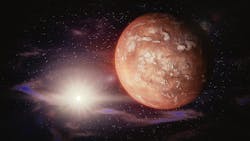Chernobyl mold could shield astronauts from deep-space radiation
STANFORD, Calif., - One of the biggest dangers of interplanetary travel is radiation exposure. In a single round trip to Mars, you may absorb 60 percent of the maximum recommend lifetime dosage. One surprising solution may be mold, according to researchers from Stanford and North Carolina universities. They discovered that fungus thriving in the nuclear fallout of Chernobyl blocked radiation on the international space station (ISS), and could be adapted for trips to the Moon and Mars, reports Steve Dent for Engadget. Continue reading original article.
The Intelligent Aerospace take:
July 29, 2020 -Humans, like the rest of the Kingdom Animalia, are not well suited to absorbing ionizing radiation. Inside the atmosphere, people are relatively safe from radiation so long as fair-skinned folks wear sunscreen and stay away from places like the Chernobyl reactor without proper protective equipment.
It turns out the Cladosporium sphaerospermum fungi is doing just fine near Chernobly - thriving, really - and may prove useful to the few folks brave enough to explore the cosmos. The fungi may actually feed on radiation, turning gamma rays into energy.
Aboard the International Space Station, research was done on the fungi to see how it fared in space and if it could block radiation. The team also concluded that an eight-inch thick layer of the fungi would "largely negate" the radiation dose an astronaut would absorb on Mars
Related: COTS in space: the radiation barrier
Related: Boeing eyes next-gen radiation-hardened space processor based on the ARM architecture
Jamie Whitney, Associate Editor
Intelligent Aerospace
